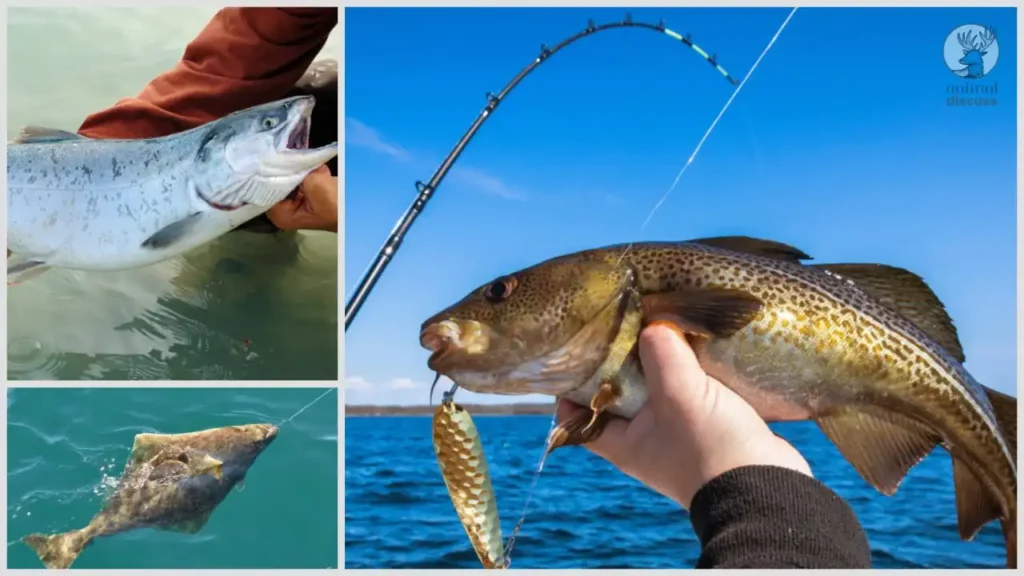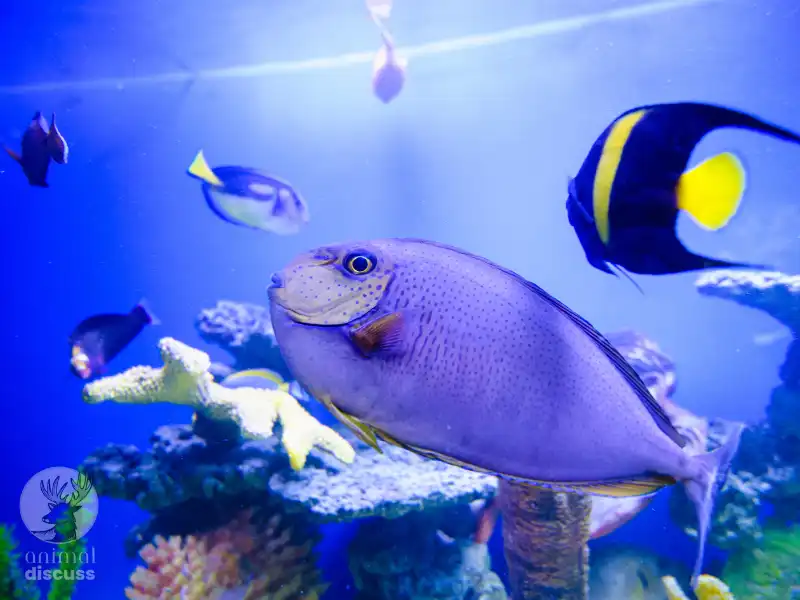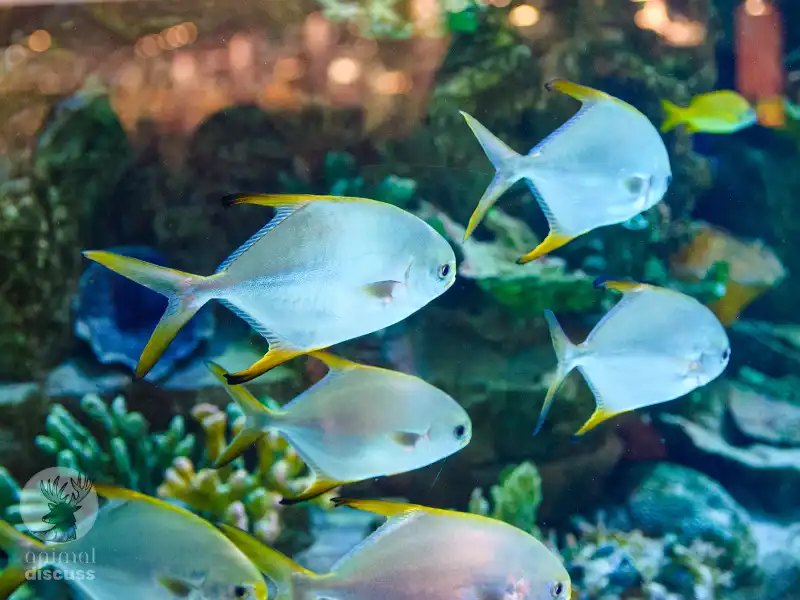Sea Fishes
Get a glimpse of sea fishes’ oceanic life, their diverse feeding habits, and wonderful reproduction strategies.

(Kawkab Nadim)
(Engineer and Pets Owner)
I have a passion for animals and love taking care of pets. That’s why I also operate several blogs about pet and animal husbandry.
Have you ever thought about varieties of sea fish roaming in the ocean surface? Even if you’ve not, after reading this article you’ll know about varied habitats and diversified eating habits of sea fishes that maintain our marine life balance. Plus, their various methods of reproduction to preserve their generations.

You will also know about the commercial significance of some sea fishes which are highly treasured.
So, what are you waiting for? Let’s descend into the exciting world of sea fishes.
Where Do Sea Fishes Inhabit?
In an ocean, fishes are everywhere; either they are seen inhabiting at the top of the sea or inhabiting in the darker parts. Sea fishes like lanternfish have specialized bodies to cope with the intense pressure and darkness of bottomless depths.
Likewise, Anglerfish use their lighted parts to aid them in vision or predation through large eyes into the dark of the deep ocean. Also, they use lights to communicate or find food in Mid-water.
Sailfish swim just below the surface where sunlight reaches because they have sleeker bodies for faster swimming.
Accordingly, there are sea fishes that hide or dig in the sands in sandy regions. When the shore is muddy, they find ways of traversing through soft mud. In fact, each sea fish requires a powerful body to resist the flow in fast-moving mountainous streams.
How Many Diverse Types of Sea Fish Roam in The Ocean?
Well, the diversity of sea fish roaming in the ocean is huge. However, for your convenience, I have divided it into three types in the table below.
| Types | Description | Examples |
|---|---|---|
| Pelagic fish | They live in the open sea and are found mostly on top of water. | Sharks, Salmons, Tunas, etc. |
| Demersal fish | They dwell near the ocean bottom, adjusting to a dual life in shallow as well as deep water. | Cod, Haddock, Pollack, etc. |
| Benthic fish | They reside near the ocean floor and form an important part of the benthonic ecosystem. | Halibut, Lobster, etc. |
Interested in learning more about sea animals? Read our article covering important details about different types of ocean fishes, birds, turtles and including their care, nutrition and more!
What Do Sea Fishes Have on Their Menu?
Sea fish have different feeding manners that are especially useful in ensuring the ecological balance of marine environments.
Predation is one of the major feeding types seen in sea fishes. They act as predators and capture other small organisms like fish, crustaceans, squid, etc.
However, certain sea fish develop herbivorous characteristics; they feed primarily on algae and plants such as surgeonfish and parrotfish.

Sea fishes like Prochilodus nigricans, prochilodus lineatus, etc. also have special detritivores, which feed upon the dead organic matter and debris.
Another group like the baleen whales, whale sharks, etc. are filter feeders which involve the capture of small particles, plankton, or any organic matter using their gills to sift through water.
Parasitic sea fish have adapted to dwell either in or on hosts and derive necessary nutrients. Scavenging sea fishes like hagfish, lampreys, etc. play an important part by eating dead bodies and detritus available on the seabed.
In sum, the feeding of sea fishes is representative of marine food chains.
How Do Sea Fish Migrate?
You’ll be amazed to know that sea fishes migrate too! For instance, Anadromous fish, including Salmon, migrate from the ocean into freshwater rivers for breeding and spawning.
Likewise, reverse migrations are evident in catadromous fish like Eels. They migrate from freshwater to spawn in the ocean.
Pelagic oceanic fishes move from deeper to shallower layers of water in what is called vertical migration. This behavior is usually connected with feeding habits since these fish follow the vertical activity of their prey.
Likewise, certain species of tuna are characterized by wide transoceanic migrations. These specialized swimmers cover great distances in their hunt for favorable feeding areas.
Do Sea Fishes Spawn or Bear Live Young?
Well, just like humans, sea fishes reproduce too. One of the common reproductive strategies is external fertilization done by your favorite fishes like salmon, tuna, etc.
This is a process where eggs are ejected into water and their subsequent fertilizations occur outside. This happens when large-scale spawning events are synchronized.
Conversely, several marine fishes display internal fertilization. This is when the female carries her eggs until they develop or give birth to live young. For example, Sharks are famous for internal fertilization.

Other interesting features of reproduction in marine fish are various hatching methods. Males protect and develop the fertilized eggs in specialized pouches until they hatch like seahorses.
Some fish species are nest-builders, such as Damselfishes build and defend nests attracting females for egg laying.
Accordingly, the reproduction efforts of many marine fishes are linked with season, water temperature, and availability of food. These reproductive patterns of sea fishes demonstrate the range of life histories of sea fishes.
What Are the Commercially Valued Sea Fishes?
Fish are not only marine wonders but monetary units of trade on commercial seascapes. Let’s uncover the rich ocean of high-valued underwater assets in the table below.
| Types | Description |
|---|---|
| Tuna | Famous for its rich texture and flavor. |
| Salmon | It has a great demand for nutritious flesh. |
| Lobster | It is a premium seafood item. |
| Herring | Herring, a small, silver-colored fish, is liked for its distinctive flavor. |
| Mackerel | A fatty fish, known for its rich flavor is used grilled or smoked as the main food. |
In conclusion, I have talked about sea fishes and their intriguing lives. These sea animals inhabit diverse parts of the seas, feed in different ways, and migrate far away; they propagate diversely. Thus, they are necessary for maintaining the oceanic environment.
Apart from that, tuna, salmon, and lobster like commercial fish are also important in our dietary life. Now, curious to know more about them? Check out the other articles on sea animals from this blog.

